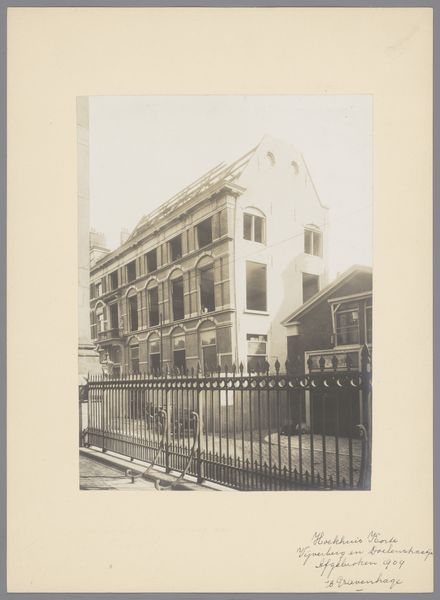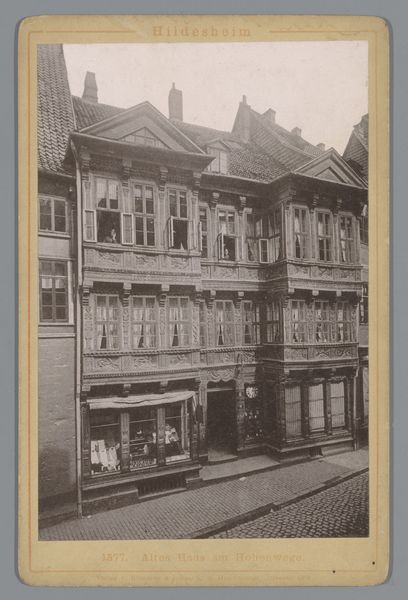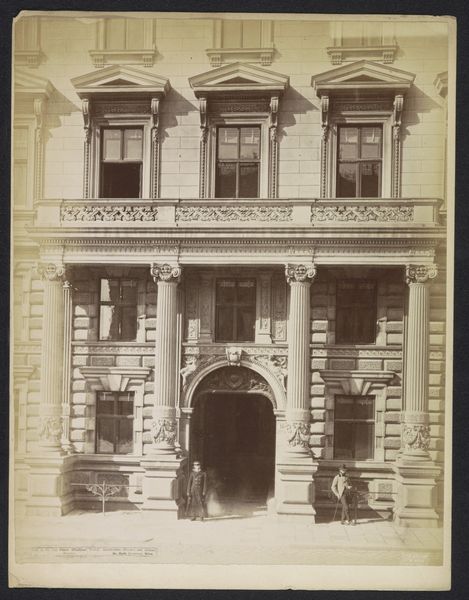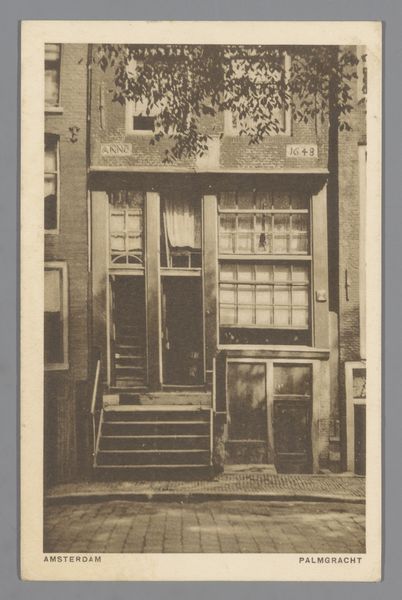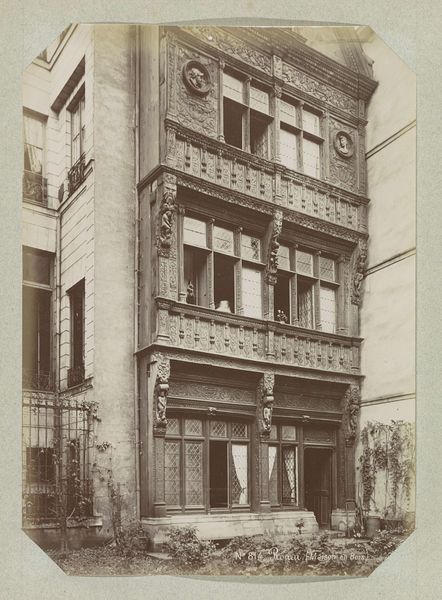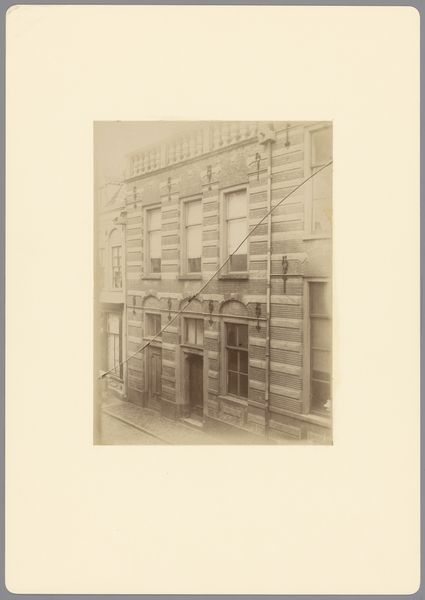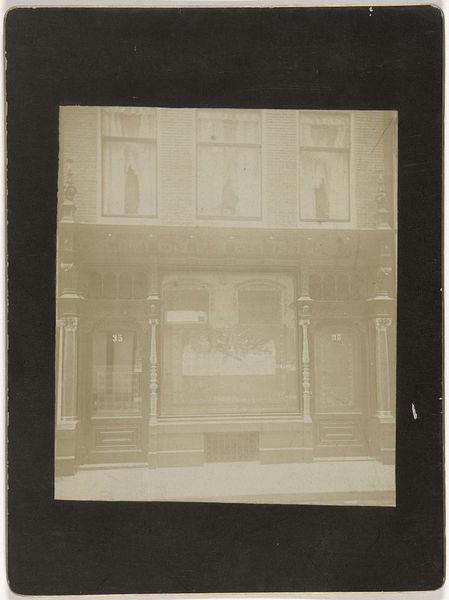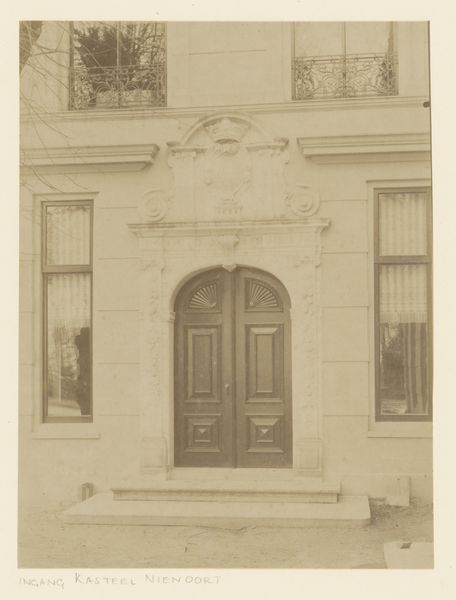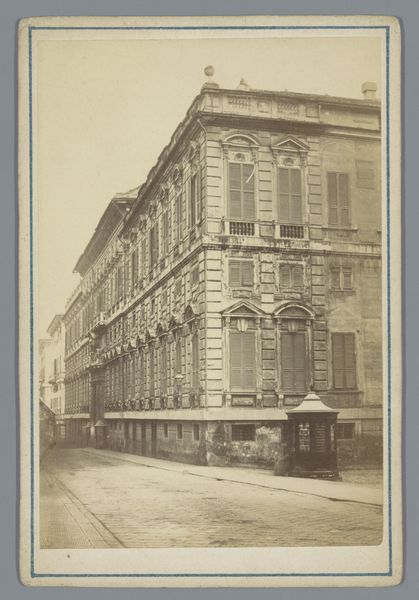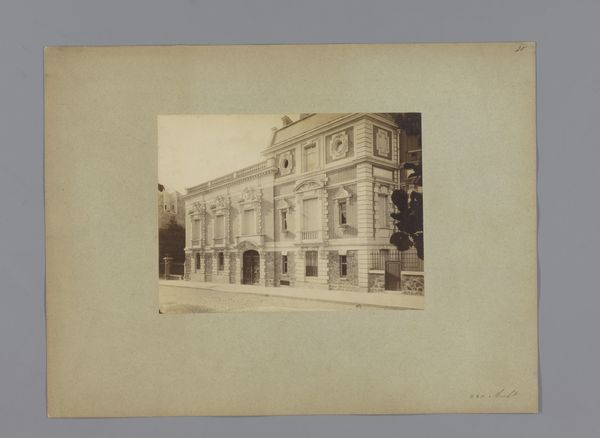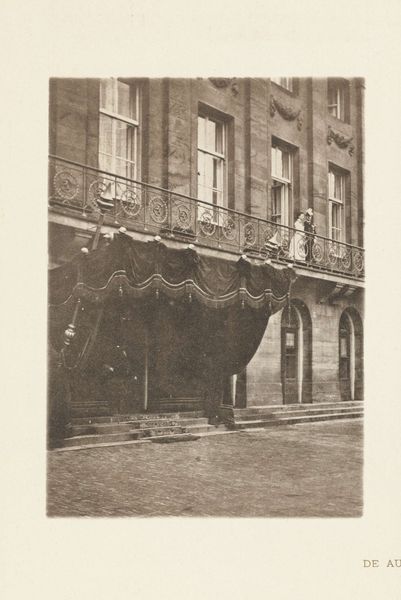
photography, photomontage, gelatin-silver-print, architecture
#
photography
#
photomontage
#
gelatin-silver-print
#
cityscape
#
architecture
Dimensions: height 170 mm, width 230 mm
Copyright: Rijks Museum: Open Domain
Curator: Editor: So, this gelatin-silver print, a photomontage titled "1910-1922," was made by Atelier Kurkdjian sometime between 1931 and 1934. It’s a pretty straightforward image of a building facade, but the varying degrees of shadow give it this somber quality. What jumps out at you about this work? Curator: Well, immediately I consider the materials. A gelatin-silver print offers specific qualities. Consider the context of the commission; this studio likely operated with an understanding of consumer demand for particular images of buildings as documents of progress. How does the status of the gelatin-silver print elevate this above mere documentary photography? Editor: Hmm, I suppose the printing process gives a certain weight, like it is more than a simple snapshot. A permanent object. The use of photomontage also gives it an "unreal" feel. Do you think it's related to this focus on industry and urban life in that time period? Curator: Precisely! Look closely, it seems to suggest an interest in documenting the urban environment as a constructed, manufactured space, much like the mass-produced commodities housed inside. The title itself, spanning over a decade, further reinforces the industrial focus on production timelines. What message do you believe the Atelier aimed to convey through this material representation of urban life? Editor: It really seems that the artist is highlighting how progress, with its construction and commodities, is captured through very specific methods tied to its making and dissemination. I had not initially picked up on this idea of documentation vs. art, especially considering the materials used. Curator: Exactly! Reflecting on the materials and production helps us grasp a deeper social and cultural understanding of what they wanted to show.
Comments
No comments
Be the first to comment and join the conversation on the ultimate creative platform.

